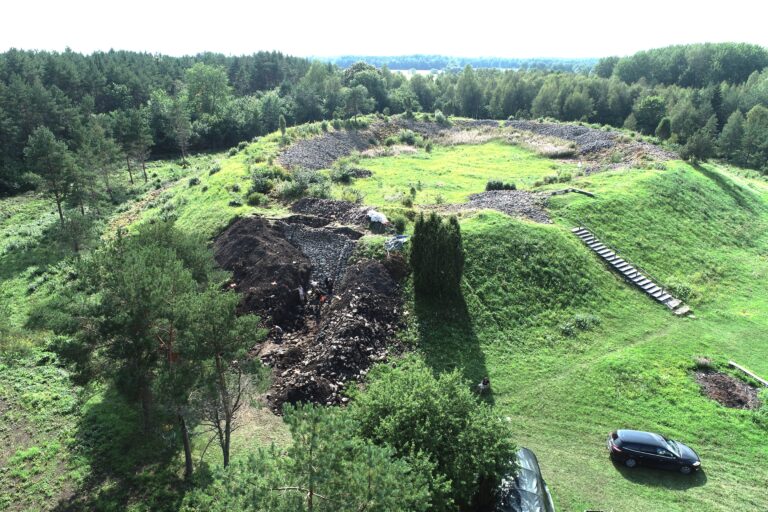
The large 12th-century hillforts of Saaremaa were built of dry-laid stone. One of the best preserved and researched examples is Valjala.
The siege of the Valjala hillfort in 1227 was described by chronicler Henry of Livonia. According to the chronicler, there were both fortresses (castrum) and “towns” (urbs) in Saaremaa, and Valjala was the biggest of them.
The large 12th-century stone-walled hillforts of Saaremaa, along with their surrounding concentric ramparts, closely resembled those found on the Swedish island of Öland.

The surroundings of the Valjala hill-fort are largely marshy. About 500 m from the castle was the river Lõve, which connected it with the sea. The higher ground lay mainly to the north-east of the central hill-fort, for about 200 m along the present road. A weak cultural layer has been detected there. It is unlikely that the ‘town’ of Valjala was permanently settled, but rather a place where more people gathered seasonally.
The courtyard of Valjala hillfort was excavated in the 1960s. It turned out that there were quite a few buildings inside the hillfort – the excavations revealed the remains of at least eight log houses. Numerous artefacts were found, primarily dating from the early 12th century to around 1260. During this period, the hillfort was actively used, with some inhabitants residing there year-round.

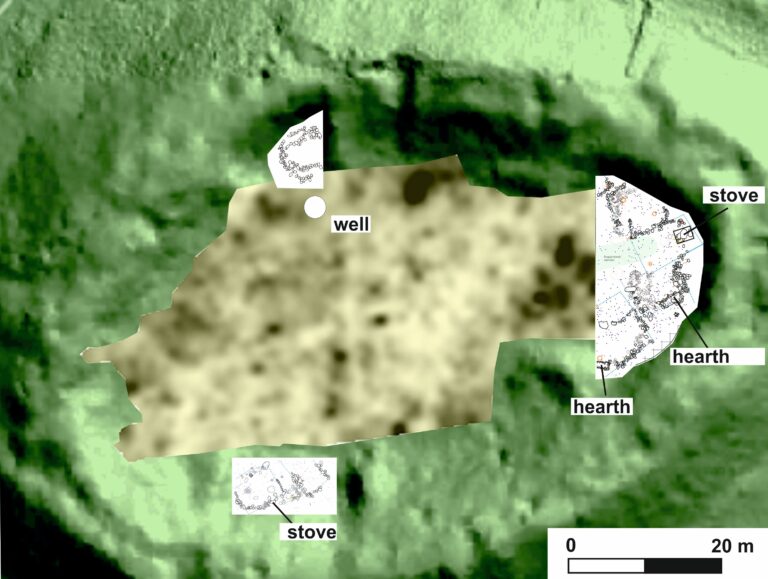
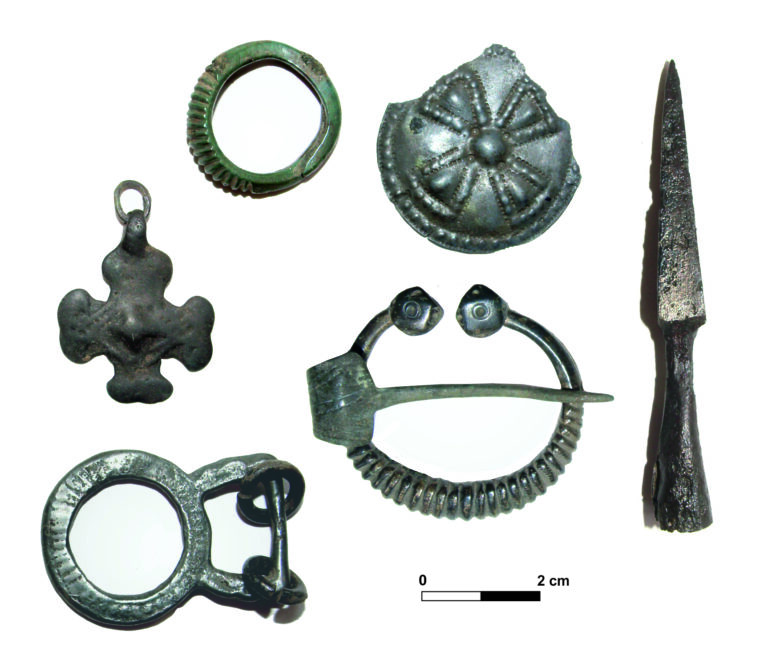
Foundation Osiliana excavated at the Valjala hillfort and around it 2021-24. As indicated by these excavations, the area of the hillfort was already in some kind of use in the 5th-6th centuries. The earliest occupation was probably connected in some way with another fortification 700 m east-northeast of the fortress, the Valjala old ring-fort.
A more intensive period of human activity in the area of the later Valjala hill-fort began in the second half of the 11th century. Probably at the beginning of the 12th century, a fortification system consisting of three ramparts was built. To access the hillfort’s courtyard, people had to pass through the surrounding “town”, and navigate through at least three gates.
The outer rampart (wall 1; visible on the LiDAR map) was almost circular in shape, with a diameter of 186-193 m. A few dozen metres towards the centre of the fortification system was wall 2, which was probably oval in shape and is still partially visible on LiDAR maps at the foot of the main hill-fort. The walls 1 and 2 were not very strong, with stone walls about 2m wide and 2m high, probably topped by an additional timber facade.
The innermost rampart was more powerful than the others. It was originally built as a stone rampart with large log boxes on top that were filled with smaller stones. Throughout the 12th century, the central fort was rebuilt several times. Rampart made entirely of dry-laid stones were erected, reaching heights of 10 metres or more. The walls of the ramparts were made of limestone broken from a quarry, and covered with clay plaster. Inside the hillfort, remnants of the stone walls are still visible, while the exterior is covered by earthworks from later periods. In 2022, during excavations led by Foundation Osiliana, a section of the outer stone wall was briefly uncovered.
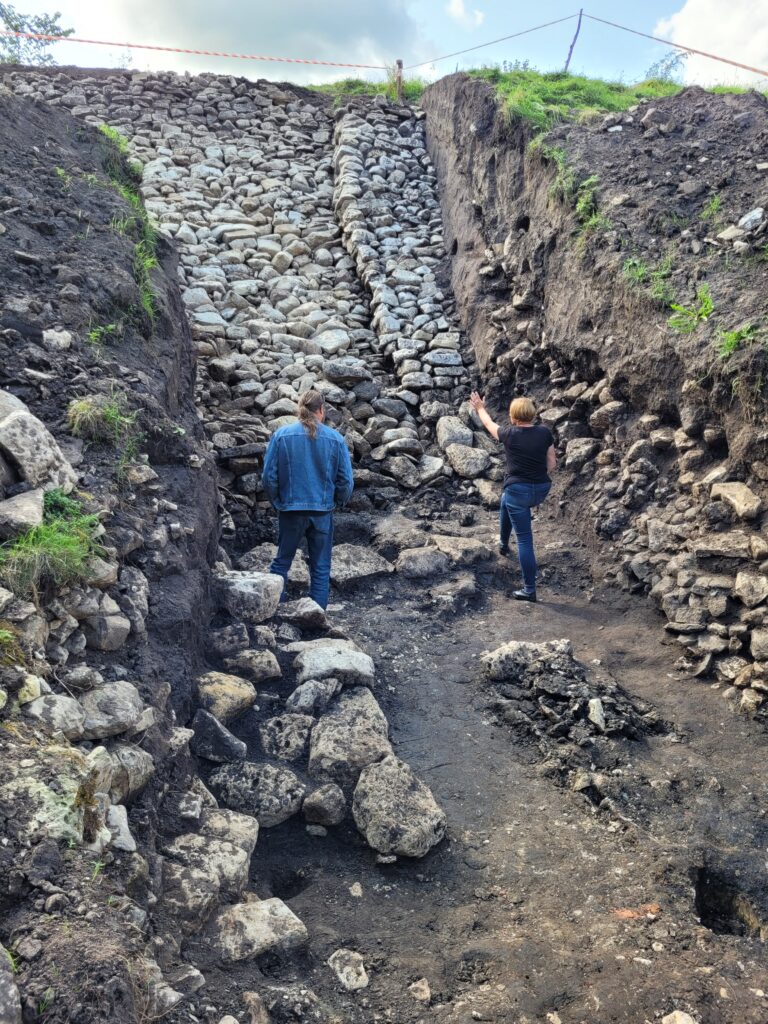
The central fort of Valjala must have been an exceptionally powerful sight in the 12th century. It was significantly larger and taller than the first mortar-bound stone fortresses that emerged in Livonia towards the end of the century, not to mention the first small stone churches. It was nearly impregnable – indeed, there is no record of it ever being conquered. Moreover, it served as a symbol of the power of local lords. The 12th-century islanders, who controlled the eastern sea routes of the Baltic, were feared opponents to all seafarers.
At the end of the 12th century, the lower part of the stone wall was covered with soil. This was probably done for practical reasons. The Livonian Crusaders had brought with them a modern siege technique – the catapults – with which thrown stones could easily damage the stone wall if it was not bound with mortar. To avoid this, an additional mound of earth was piled up.
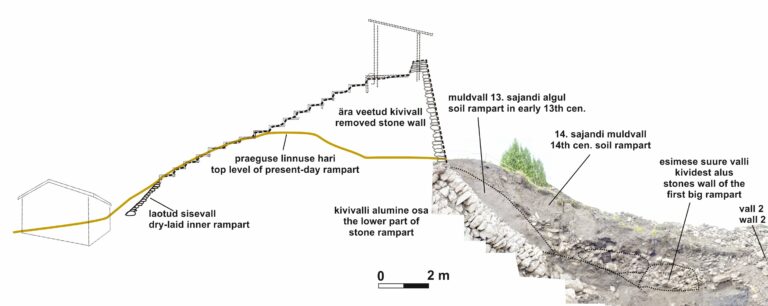
Around the 1260s, Valjala hillfort was abandoned. After a few decades, the stone wall began to deteriorate. However, around this time, probably in the first half of the 14th century, the last major fortification work of the Valjala hillfort was undertaken. A new embankment – still visible today – was constructed on the outer side of the central fort.
An additional earthwork was needed to allow a timber fortification to be erected on the roof of the wall, next to the crumbling stone wall. Similarly, the concentric wall surrounding the fort was additionally fortified by piling earth on top of the old stone wall and erecting a log fence on top. Today, this outer rampart is discernible as a low ridge, from which stones and soil were extracted for construction projects elsewhere in the early 20th century.
We can assume that the final fortification of Valjala hillfort was connected to the St. George’s Night Uprising. According to the chronicles, the islanders built a strong concentric log wall and an impregnable log fort within it. In 1344, the Teutonic Order succeeded in breaking through the outer concentric wall and killed many inside, but this did not result in a victory and they did not take the central fort. Nonetheless, they succeeded in capturing and executing Vesse, the king of the islanders who defended the wall.


